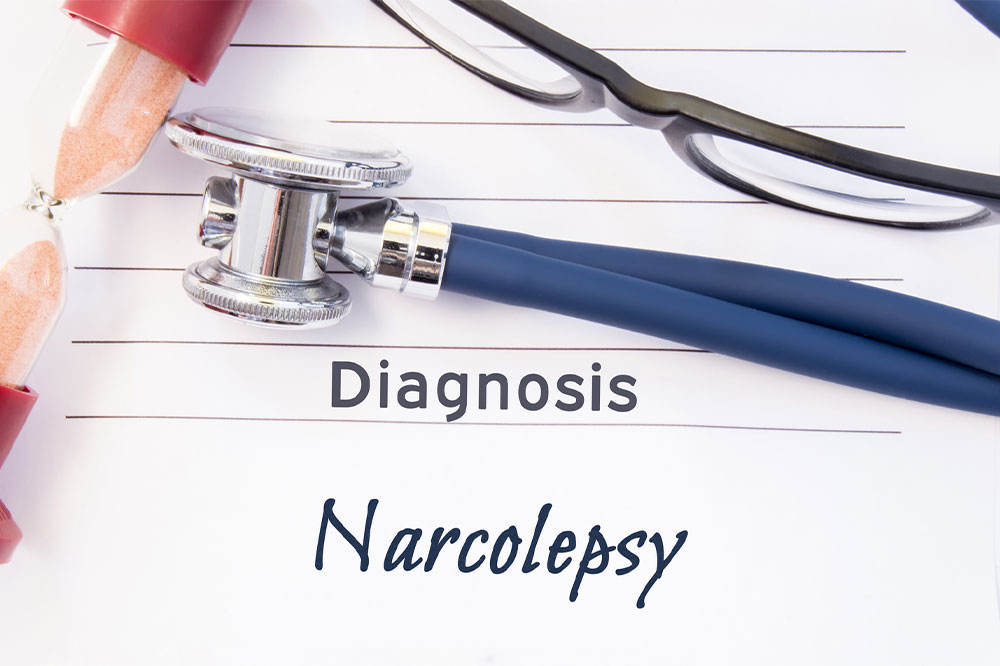
Narcolepsy – Types, symptoms, causes, and management
Narcolepsy is a neurological condition that affects how the human brain controls sleep and wakefulness. Patients have an abnormal night’s sleep, combined with severe and persistent daytime sleepiness. These problems usually continue throughout an individual’s lifetime. However, compared to other sleep disorders, narcolepsy is rare, affecting about one in 2,000 people in the country. Here, we take a deeper look at narcolepsy, its types, symptoms, causes, and ways to manage it.
What is narcolepsy?
Narcolepsy is a chronic neurological disease that causes fragmented sleep and excessive daytime sleepiness. In a typical sleep cycle, a person takes around 60 to 90 minutes to reach the stage of rapid eye movement (REM) sleep. However, people with narcolepsy usually enter the REM stage within 15 minutes of going to bed and intermittently during the waking hours. This occurs because of the changes in the brain’s ability to control sleep and wakefulness. Note that vivid dreams and muscle paralysis are also common during REM sleep in narcolepsy.
Types of narcolepsy
There are two main types of narcolepsy:
Type 1 narcolepsy
Formerly called narcolepsy with cataplexy, type 1 is more common. It is characterized by a symptom called cataplexy, a sudden loss of muscle tone while a person is awake. However, not all people with this form of narcolepsy experience episodes of cataplexy. Those with low levels of hypocretin-1, a chemical in the body that helps control wakefulness, are diagnosed with type 1 narcolepsy.
Type 2 narcolepsy
Formerly known as narcolepsy without cataplexy, type 2 narcolepsy patients have similar symptoms. The critical difference is that they do not experience cataplexy and have normal levels of hypocretin-1. However, a person with this form of narcolepsy can develop cataplexy and low hypocretin-1 levels later, in which case their diagnosis is reclassified as type 1 narcolepsy.
Symptoms of narcolepsy
Generally, narcolepsy symptoms worsen in the initial years and continue throughout an individual’s life. Here are some common symptoms:
Excessive daytime sleepiness
Almost everyone with narcolepsy experiences significant daytime sleepiness. They get the urge to sleep anytime and anywhere, especially during monotonous situations, such as working in the office or performing a chore at home. These short naps, usually only a few minutes long, can help them feel refreshed, but only for a while.
Sleep paralysis
This is the feeling of being unable to move or speak. Sleep paralysis can occur while falling asleep, sleeping, or waking and can last a few seconds or minutes.
Hallucinations
Narcolepsy patients may experience vivid imagery while falling asleep (hypnagogic hallucinations) or waking up (hypnopompic hallucinations). These hallucinations may accompany sleep paralysis, making the experience more frightening.
Cataplexy
As mentioned, cataplexy is a sudden, temporary loss of muscle control in people with type 1 narcolepsy. It can cause anything from slurred speech to total body collapse and may last up to a few minutes. Cataplexy is often triggered by intense emotions, such as laughter, excitement, fear, surprise, or anger.
Causes and risk factors of narcolepsy
Researchers are uncertain about the exact cause of narcolepsy. However, they believe that the amount of hypocretin (a brain protein) plays a vital role in determining whether a person will develop the condition. It is mainly because hypocretin regulates sleep-wake cycles, and people with type 1 narcolepsy have low levels.
The factors that increase the risk of developing the condition include:
Family history of narcolepsy
Individuals whose parent or sibling has narcolepsy are more likely to get the condition.
Autoimmune conditions
In people with autoimmune conditions, the immune system can mistakenly attack brain cells responsible for hypocretin production, resulting in narcolepsy.
Brain injury or tumor
Sometimes, injury or trauma can damage the part of the brain that controls REM sleep and wakefulness.
Environmental toxins
Exposure to pesticides, heavy metals, and other environmental toxins increases the risk of the disease.
Lifestyle changes to manage narcolepsy
There is no known cure for narcolepsy, but certain lifestyle modifications can help manage it. These changes include:
Exercising daily
Working out for about half an hour every day can help improve sleep quality, increase alertness, promote positive mental health, and increase the levels of neurotransmitters that play a role in the sleep-wake cycle.
Taking naps
Scheduling short naps of about 20 minutes multiple times a day can promote freshness and reduce daytime sleepiness. Further, developing and following a consistent sleep-wake schedule can improve overall sleep quality.
Eating healthy
Since people with narcolepsy are at increased risk of weight gain, they must follow a balanced meal plan. Avoiding caffeine and other stimulants and eating smaller, multiple meals instead of two large meals may help manage the disorder.




